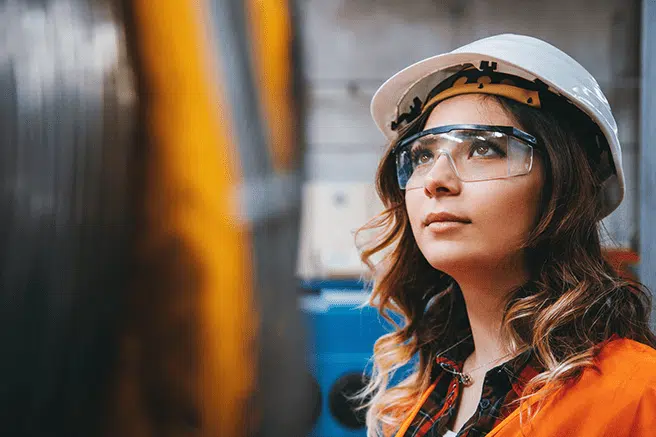Knowing that employers will respect and promote diversity is not only decent, but good for business. Greater diversity in teams is more likely to advance innovation and avoid “group think” outcomes, explains Jeffrey Luckins.
Manufacturing is a process of evolution, it continues to progress and re-invent itself, in Australia the movement towards Advanced Manufacturing has become the norm, which is reflective of the use of innovative technology to improve products or processes.
While physical assets, tools, machinery and instruments will continue to be a key to success of manufacturing enterprises, the inescapable truth for any business is that the drivers of wealth creation are to be found in its intangible assets.
An analysis of the enterprise value of businesses less their tangible asset value, across a vast array of industries (except for investment and banking entities) reveals that 80% of the real value of a business is held with intangible assets such as acquired goodwill, brand names, trademarks, customer lists and the like, as opposed to tangible assets.
The shift in value paradigm from tangible assets to intangible assets began in the early 20th century with the growth and dominance of stock exchanges around the world, mergers and acquisitions and the focus on how brands (like Coca Cola for instance) were able to generate huge revenue streams and therefore cash inflows on the back of consumer loyalty. Business valuations progressed from an analysis of balance sheets to a focus on sustainable earnings and consideration of valuation methodologies to determine the extent to which cash flows could be generated from the value of intangible assets.
Consider where the underlying value of intangible assets exists within an enterprise and it can be grown and supported for wealth creation. Especially where the predominant value of intangible assets for an enterprise is driven by its brands, trademarks, internally developed technology, systems and secrets.
Underlying intangible asset value of enterprises
This value is found in an organisation’s culture, its people, and its purpose.
Leading American business magazine Forbes partnered with market research firm Statista to compile a list of the World’s Best Employers in 2020. They surveyed 160,000 full-time and part-time workers from 58 countries working for businesses with operations in multiple nations or regions. Participants were asked to rate their willingness to recommend their own employers to friends and family and to rate their satisfaction with their employers’ COVID-19 responses and score their employers on image, economic footprint, talent development, gender equality and social responsibility.
Unsurprisingly, the top 10 companies listed as “World’s Best” include Big Tech giants Samsung (1), Amazon (2), Microsoft (4), Apple (6), Adobe (7) & Alphabet (8). Excepting that there is substantial acquired goodwill intangible assets on their respective balance sheets, especially as they have grown and acquired smaller competitors along the way, the fundamentals of these enterprises is that they have a culture and purpose which attracts the best talent and branding which attracts very loyal customers.
There is nothing new in these fundamentals, but the key issues to consider is how and what to invest in and what to do differently to attract and retain the best talent, develop these people and ultimately build the brand to sit above competitors.
Ironically, the following two areas I’ll focus on are the “intangible elements” behind the intangible assets:
- Rebuilding team and culture
- Diversity, equity and inclusion
In other words, these are the real intangible assets to focus on – people and culture.
Rebuilding team and culture
As we emerge from an extraordinary two years of challenges, employees can be feeling disconnected from their teams, disillusioned, stressed, concerned for the future, and perhaps unsupported or alone. Even if regular Zoom meetings were held, these can lack a level of communication, learning and support that comes from physically being together. In addition, many employees had to home school their children or assist with their learning to some extent, care for elderly parents and experience other challenges that nobody predicted or prepared for. The fall-out post COVID-19 will involve many employees making choices to leave their current roles seeking alternative employers or roles where work life balance and flexibility are a given, where greater support and understanding is provided, including for learning, career advancement and benefits available.
Rebuild your organisation’s culture means investing in people and technology to allow people to work where they perform best and to enable participation in a range of activities which promote rebuilding teams, supporting positive culture and assisting employees to fulfil their potential.
Diversity, equity and inclusion
Perhaps this should be referred to as empathy, because when you consider the feelings of your team members, their perspectives on the culture and performance of the enterprise, their ability to communicate their thoughts, be heard, respected, and engaged with, that’s what we are talking about.
Knowing that employers will respect and promote diversity is not only decent, but good for business. Greater diversity in teams is more likely to advance innovation and avoid “group think” outcomes. Moreover, it creates a culture of merit, higher performance, and a more enjoyable workplace.
Your call to action
Enterprises should focus on these intangible qualities of rebuilding team and culture, diversity, equity and inclusion as priority because being the employer of choice will attract the best people and having the best people enables an enterprise to achieve optimal outcomes. Afterall, these intangible elements are the drivers of business success and the intangible assets you should value so highly.
For more information, please contact your local William Buck manufacturing specialist.




















